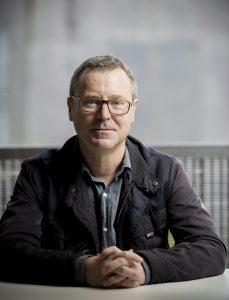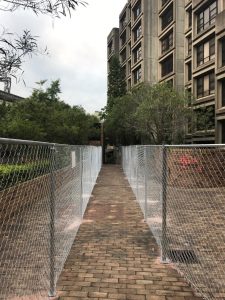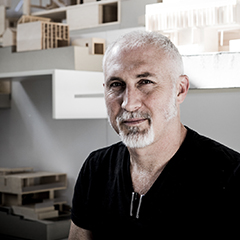
NSW Chapter President, Andrew Nimmo
July 2017
I hope you enjoyed our Awards presentation in the Big Top at Luna Park last Saturday as much as I did. This was a memorable night celebrating notable achievements in the things architects do best – designing buildings and spaces that contribute to making the world a better place. I particularly appreciated the skilful hosting by journalist and broadcaster Virginia Trioli.
Many thanks to the members who produced the work for the 211 entries, the jurors, the awards committee, our supporting partners – BlueScope, Dulux, Bondor, AWS, Smeg, Waste Wise, Big Ass Fans, and Bespoke – Hannah Burgess, Rosanna Scarcella, the volunteers and many others behind the scenes who helped to make this such a successful event.
Congratulations to the 27 projects awarded commendations on the night and best wishes and good luck to the 39 award winners whose projects now proceed to the national awards.
Honouring the people’s hero
This year my first President’s Prize acknowledges an individual whose impact on the fabric of this city is perhaps greater than any other. Not because of the buildings he designed, or commissioned, or built – but because of the buildings he saved.
Jack Mundey is now clearly on the right side of history, but in the 1970s there were many who saw him as a dangerous radical and “henchman”.
From the world’s first Green Ban in 1971 to save Kelly’s Bush; and subsequent Green Bans throughout the decade that saved buildings and precincts across the city, from The Rocks to Woolloomooloo and beyond, Jack Mundey, in his role as Secretary of the NSW Builders’ Labourers Federation, was the face of the Green Bans movement and a hero to many.
Along the way he was elected to Sydney City Council as an Alderman in 1984; appointed Chair of the Historic Houses Trust by Premier Bob Carr in 1995; named a National Living Treasure by the National Trust in 1997; awarded honorary doctorates from the University of Western Sydney, the University of NSW and a Master of Environment from University of Sydney and appointed an Officer of the Order of Australia in 2000.
Jack has continued to advocate for the preservation of places steeped in history, culture and social networks. He reminds us we can never take conservation and heritage protection for granted, that we must always be prepared to fight for what we know to be important.
Jack Mundey is truly a man of the people.
He used his position in the trade union movement to support the residents of entire neighbourhoods like the Rocks, Millers Point, Victoria Street and Woolloomooloo to save their houses from demolition.
He’s also a democrat. His union invoked a green ban only after it had received a formal request from the local community AND a vote of members had agreed to the ban.
And he hasn’t given up the fight.
Last year he joined Shaun Carter and the local community in their bid to save the Sirius building, a place designed and built to house residents of the Rocks who had been displaced by a government determined to redevelop the area.
The story of that campaign for a social housing icon is not yet over.
As Jack himself said while he was Chairman of the Historic Houses Trust 20 years ago: ‘Too many of the best 20th century buildings have been lost and others are under threat of demolition. In this period there is an opportunity to lift the level of debate about society’s responsibility to protect the best of our built environment and heritage.’
For his extraordinary contribution to the preservation of our built heritage through his activist advocacy for nearly 50 years, Jack Mundey is a worthy recipient of the 2017 President’s Prize.
Andrew Nimmo
NSW Chapter President



